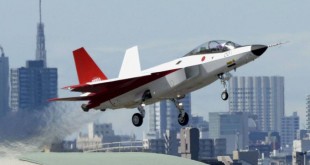The world population is estimated to reach 9.8 billion by 2050. Ensuring an adequate food supply for such a large number of people would be challenging enough for agriculture. But climate change is putting even more pressure on farmers, agricultural companies, and crop scientists to protect plants from the effects …
Read More »Militaries developing Lethal, extremely maneuverable, Autonomous and stealthy Unmanned Combat Aerial Vehicles (UCAV)
The armed drones like MQ-1 Predator and its larger cousin, MQ-9 Reaper, dual intelligence, surveillance and reconnaissance-strike platforms have been highly successful against non-state actors as part of the counterterrorism fight. A MQ-1 Predator UAVs armed with Hellfire missiles have been used by the U.S. as platforms for hitting ground …
Read More »Soft Robotics for ocean exploration and reconnaissance missions of Navy
Most of the ocean is unknown. Yet we know that the most challenging environments on the planet reside in it. Understanding the ocean in its totality is a key component for the sustainable development of human activities and for the mitigation of climate change, as proclaimed by the United Nations. …
Read More »Artificial Intelligence and Machine Learning are enabling the future of fully automated Cyber Security
AI emulates human cognition – i.e. learning based on experience and patterns, rather than by inference (cause and effect). Artificial intelligence covers everything from machine learning to business intelligence. Machine learning is a branch of artificial intelligence (AI) that refers to technologies that enable computers to learn and adapt through …
Read More »Holographic data memory can store 1 terabyte (TB) of data in a sugar-cube-sized crystal.
Photography measures how much light of different color hits the photographic film. However, light is also a wave, and is therefore characterized by the phase. Phase specifies the position of a point within the wave cycle and correlates to depth of information, meaning that recording the phase of light scattered …
Read More »UK implementing National Strategy of Quantum Technology to become Global Leader in future Quantum industry
The demand for quantum technologies is being driven by large and significant societal challenges, including the need to build in more inhospitable places, for greater security around information and transactions, for better medicines and therapies, and to counter cyber terrorism. Technologies that will allow fire crews to see through smoke …
Read More »DOD looks to secure Content delivery Network (CDN) services to stream its mission-critical and sensitive information
A Content Delivery Network (CDN) is a globally distributed network of web servers or Points of Presence (PoP) whose purpose is to provide faster content delivery. The content is replicated and stored throughout the CDN so the user can access the data that is stored at a location that is …
Read More »Fluidic Propulsive System most silent propulsion for future Drones & Aircraft
In traditional aircraft design, airframes and engines are designed separately and bolted together. This leads to inefficiencies due to additional drag. The approach also leads to propulsive inefficiencies via non-distributed propulsion. Hovering and VTOL requirements introduce even more complexity, size and weight to the system. Jetoptera’s design is a …
Read More »IoT Chips or IoT Modules and SoCs enabling Internet of Things revolution
The global IoT market is expected to reach a value of USD 1,386.06 billion by 2026 from USD 761.4 billion in 2020 at a CAGR of 10.53%, during the period 2021-2026. The internet of things technology helps in connecting various smart devices together to ease the operation and sharing of …
Read More »Japan plans F-35A and F-35B induction, indigenous stealth fighter and Hypersonic Weapons to counter Chinese J-20 deployment
The security environment of Japan and the whole region is threatened by expanding military and assertiveness of China and the testing of nuclear weapons and ballistic missiles by North Korea. Tensions between Japan and China over the Senkaku/Diaoyu Islands dispute have recently increased. Japan’s Defense White Paper released in …
Read More » International Defense Security & Technology Your trusted Source for News, Research and Analysis
International Defense Security & Technology Your trusted Source for News, Research and Analysis









